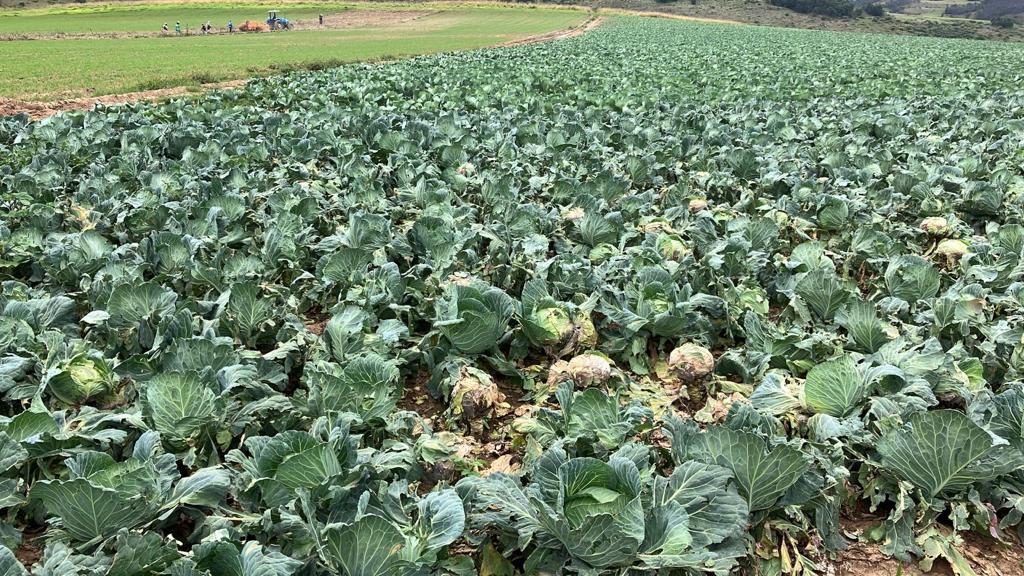
FIRST INCURSION
Although, apricots were the first reported crop of Sclerotinia sclerotiorum in South Africa (Doidge et al., 1953), reports that followed were on cruciferous crops, i.e., broccoli and cabbage. The source of the first incursion is suspected to be from seed originating from Japan and the United States of America, respectively (Holtzhausen & Knox-Davies, 1974). Today, S. sclerotiorum, has been reported on 21 crops in South Africa, most frequently reported on oilseed crops, canola, soybean and sunflower. Internationally, S. sclerotiorum is associated with more than 400 plant species, and each year first reports are submitted on previously unreported crops (Bolton, Thomma & Nelson, 2006). Please note S. minor can also cause infections on cabbage, although they are less common than those caused by S. sclerotiorum.
To understand the disease management of sclerotinia rot of cabbage, we recommend producers to read “Tactics to disrupt Sclerotinia”, to provide sufficient background on the disease cycle.
DISEASE MANAGEMENT
- AVOID planting cabbage in fields with a history of S. sclerotiorum, this will mitigate the exposure of the host to available inoculum. Avoid excessive nitrogen fertilisation. Where irrigation is practiced ensure beds are not waterlogged and rows are well aerated, creating a less favourable microclimate for the pathogen to thrive in.
- EXCLUDE planting seedlings which present as diseased, or where sclerotia (the hard black survival structure of the fungal pathogen) are observed in soil of seedlings. In cases, where seed is planted, ensure seed is free of sclerotia prior to planting.
- ERADICATE, where feasible, any infected heads from the field and bury deeper than 50 cm to ensure sclerotia are not able to successfully produce apothecia. Crop rotation with non-susceptible crops will reduce the build up of sclerotia in the field, mitigating severe infections due to lower inoculum levels. Weeds are also known host plants of S. sclerotiorum, including blackjack, common cosmos, pigweed and tall khakibos reported in South Africa.
- PROTECT your crop through selecting tolerant/resistant cultivars, if available. In South Africa, no fungicides are available for cabbage against sclerotinia rot.
FURTHER READING & RESOURCES
- Get to understand Sclerotinia, please note Sumisclex and Rovral are not registered for Sclerotina rot of cabbage in South Africa.
- Paret et al., 2021
- Dillard, 1987
Image provided from a producer in Kokstad, KZN.